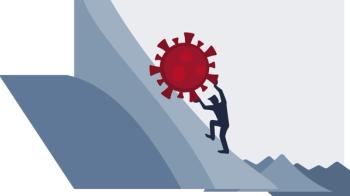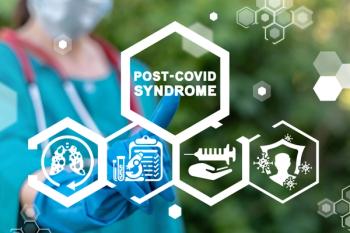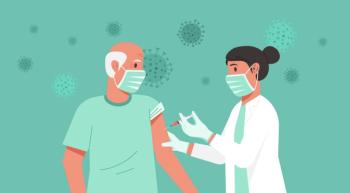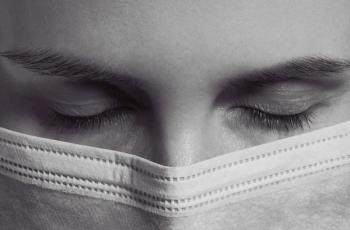
The 5-Year Anniversary of COVID-19
Key Takeaways
- COVID-19 significantly increased mental health issues, with anxiety, depression, and substance use rising, especially among vulnerable groups and healthcare workers.
- Healthcare burnout peaked due to safety fears, systemic changes, and increased workloads, highlighting the need for longitudinal studies on burnout trajectories.
Today marks 5 years since the World Health Organization declared COVID-19 a pandemic. These are the psychiatric impacts.
Five years ago today, COVID-19 was officially declared a pandemic. Little did any of us know that our lives would change forever. The change was sweeping, swift, and terrifying at many levels. It behooves us as scientists, as students of life, and simply as human beings, to reflect back on how we coped with COVID-19 and what changes the pandemic has brought.
So let me start with a few personal anecdotes before delving into the levels of impact the pandemic has left us with; I have many, but these 2 stood out. I am sure every reader has anecdotes of the sort, and at Psychiatric Times, we would be happy to read those via email submission at
However, this article is not about reminiscing, but about discussing what impacts the pandemic may have left us with. There were short-, medium-, and long-term effects on personal and systemic levels. Overall, the impact of the pandemic needs to be carefully studied, but longitudinal studies are lacking, following an outburst of publications in 2020 to 2022.
Mental Health Impacts
Mental health impacts included a sharp uptick in anxiety, depression, sleep issues and substance use.1 The reaction to the shock of isolation, massive work, and routine disruptions varied, of course, but the trends were very clear in all epidemiologic studies and surveys. Concerning trends of acute increases in intimate partner violence and child abuse were noted. The acute response to distress stabilized for most individuals with no preexisting mental illness but some longitudinal studies indicate deterioration for those with preexisting issues.2 Initial response was dependent, logically so, on governmental response, societal factors, and lockdown restrictions.3 Suicide calls to crisis hotlines and suicide rates peaked in some locations4,5 with a noted exacerbation in suicide risk factors for health care workers.6 Lingering effects remain, especially for youth: the impact on children and adolescents continues to be felt as they experienced unprecedented periods of loneliness, social isolation, and in-home conflicts at critical periods of development.7,8
Burnout
Burnout rates peaked in health care. There were distinct themes for involved practitioners: fear for one’s safety and family members, resentment, anger for lack of PPE, and strained relationships with organizations. But underneath it all, pride and eagerness to help were also present. I cannot forget a quote from one of our survey participants, an ICU physician “I have been preparing all my life for this, we’re all ready. I’m just worried about my family.”9 Understanding the trajectory of burnout is plagued by systemic changes in health care that have obscured individual experiences. Multiple factors contribute to higher burnout rates in physicians and advanced practice clinicians: pandemic after-effects,10 erosion of physician-led teams, ill fit with scope of care/increasing workload,11 increase in private equity and associated financial pressures, and artificial intelligence use in health care are some of the more commonly mentioned factors.12 In line with the previously mentioned mental health findings, longitudinal studies to better understand burnout trajectories are badly needed.
Telehealth
The sharp increase in telehealth visits represented a challenge for individuals and systems alike. The operational barriers included choice of platform, coding and billing, and privacy and confidentiality issues. But for psychiatry, the more prominent challenges were focused on a redefinition of the scope and dynamics of the patient-physician relationship. Interestingly, disparities for age and socio-economic status. While telehealth has been touted as a way to remediate gaps in rural mental health, underrepresented minorities and those in the less than $50,000 income bracket were less likely to complete telehealth visits,13 and less likely to be offered telehealth visits,14 especially substance users.15 On a practical level, many psychiatrists and therapists opted to forego physical offices in favor of all-virtual practices. This has multiple implications in initiation and maintenance of treatment. The interface of personal preference and convenience of remote work and policies, such as the set of rules labeled telehealth flexibilities, and voted on by Congress yearly, is an evolving topic with widespread implications as well.
Concluding Thoughts
The angst brought about by the COVID-19 pandemic hopefully has a silver-lining: the appreciation of human bonds and the value of in-person, deeply human, interactions. It is noteworthy that the pandemic has generated bursts of creative efforts, novels, fiction, and a vast amount of social media content. The flu epidemic in 1918, by contrast, was followed by a quasi-collective denial, to the point of being called “the forgotten epidemic.”16 I sincerely hope that tales of reliance and hope will come out of the pandemic experience, shaping our human experiences, and the field of psychiatry, in a positive way.
Dr Moukaddam is a professor of psychiatry at Baylor College of Medicine, Department of Psychiatry, and the Director of Outpatient Psychiatry at Harris Health. She also serves on the Psychiatric Times Editorial Board.
References
1. Moukaddam N, Saragadam V, Abbasi M, et al.
2. Kunzler AM, Linder S, Röthke N, et al.
3. Lee Y, Lui LMW, Chen-Li D, et al.
4. van der Burgt MCA, Mérelle S, Beekman ATF, Gilissen R.
5. Martínez-Alés G, López-Cuadrado T, Morrison C, et al.
6. Zohn JH, Hovis S.
7. O'Shea ER, Phillips KE, O’Shea KN, Roney LN.
8. Dewa LH, Roberts L, Choong E, et al.
9. Peled-Cohen L, Calderon N, Chapanin A, et al. Proceedings of the 1st Workshop on NLP for Science (NLP4Science). November 16, 2024. Accessed March 10, 2025.
10. Heisler CA, Godecker AL, Verran D, et al.
11. Harry ML, Sudak NL, Engels MJ, et al.
12. Liu H, Ding N, Li X, et al.
13. Lau KHV, Anand P, Ramirez A, Phicil S.
14. Senft Everson N, Jensen RE, Vanderpool RC.
15. Walker LS, Cui M, Cantor J, et al.
16. Vázquez-Espinosa E, Laganà C, Vázquez F.
Newsletter
Receive trusted psychiatric news, expert analysis, and clinical insights — subscribe today to support your practice and your patients.











